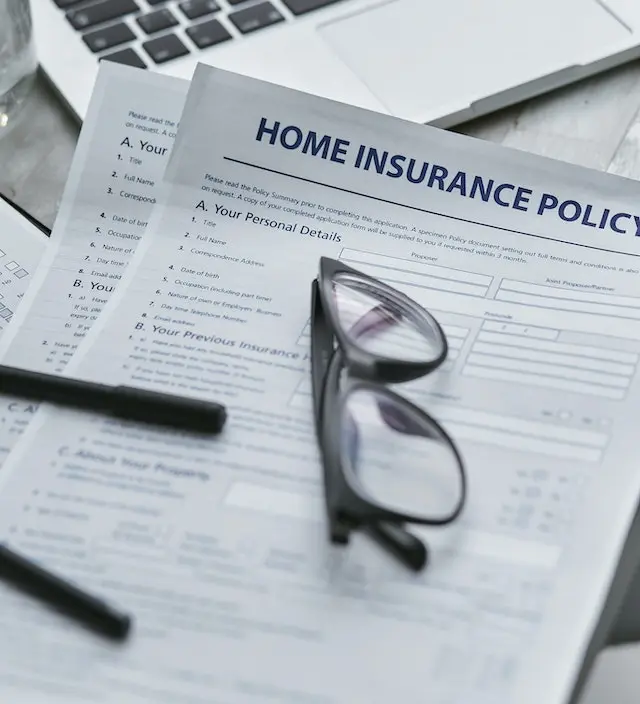Homeownership is one of the most significant investments people make in their lifetimes. Naturally, safeguarding this investment is of utmost importance. Homeowners insurance is a financial safety net, protecting you against natural disasters, fires, theft, and other unforeseen events.
In addition to this, homeowners may also go for a home warranty package, as insurance doesn’t necessarily cover appliance and system breakdowns, which is why in the process of obtaining insurance for the home, people should look into homeowners insurance vs home warranty to be fully informed.
Keep in mind, the cost of this insurance isn’t one-size-fits-all; various factors come into play. Understanding these variables is vital to secure your home without draining your wallet. This article dives into the diverse factors that can sway your insurance costs and offers insights into their impacts on your final bill.
Location Of the Property
Where your home is located dramatically influences insurance costs and often establishes a baseline for coverage expenses, including other structures coverage. Insurance companies see a home in a high-crime area as a riskier bet, leading to steeper costs. In contrast, if you live in a low-crime neighborhood, your insurance is generally more budget-friendly due to reduced risk.
Natural disasters also weigh heavily on insurance rates. If your home is in an area prone to hurricanes, floods, or wildfires, you might need specialized coverage, typically costing more. Proximity to a water source or a fire station can further shape your rates. A home closer to such amenities can be insured more affordably, thanks to faster access to emergency services, which minimizes potential damage and related expenses.
Building Materials
The kind of materials used to build your home plays a significant role in insurance pricing. Insurance providers assess the durability and resilience of these materials against various hazards like fire, storms, or decay. For example, a house built with fire-resistant materials such as bricks or stones is generally less costly to insure than one made of flammable substances like wood.
Roofing is another primary consideration. A roof constructed from weather-resistant materials like metal or asphalt shingles can reduce insurance costs. These sturdy materials better resist the elements, decreasing the risk of weather-related damage.
Flooring also matters to insurers. Flooring made from durable, water-resistant materials like tile or concrete can bring down your costs as they’re less vulnerable to damage, unlike carpets or hardwood floors, which are susceptible to water damage and wear.
Age And Condition Of The Home
Your home’s age and maintenance level are pivotal in shaping your insurance costs. Older homes usually have antiquated electrical and plumbing systems, which increases the risk of issues like electrical fires or water damage, thus driving up your insurance bill. Conversely, newer homes often benefit from modern, safer installations and rigorous building codes, leading to more favorable rates.
Investing in regular upkeep can also influence your costs. A well-maintained home is less prone to problems like leaks or mold, reducing the insurer’s perceived risk and possibly leading to lower prices on your end.
Home Security Features
Safety features can make a considerable difference in your insurance bill. Insurers often reward robust home security measures with reduced costs. For example, installing advanced security systems—surveillance cameras, burglar alarms, and motion sensors—can lessen the likelihood of break-ins, lowering costs. The same principle applies to fire prevention measures like smoke detectors and sprinklers, which can significantly mitigate potential fire damage.
Even more straightforward measures like deadbolt locks and window locks can have an impact. These basic features add another layer of protection, which insurers value.
Credit History
Your credit history is an essential factor in determining your insurance rates. Insurance companies view a strong credit score as a sign of financial responsibility and stability. A high credit score often correlates with lower insurance premiums because you’re considered less risky to insure. On the other hand, a low credit score could lead to higher rates.
It’s worth noting that while not all states allow credit history to be a deciding factor, it’s a common practice in many places. If your credit score improves, raising it can benefit you in various ways, including lowering your insurance costs. Therefore, maintaining a good credit history helps you secure loans or credit cards and can positively impact your insurance rates.
The Company Itself
The insurance provider you choose can significantly influence your rates. Different insurers use unique risk-assessment models and business practices for calculating premiums. This means depending on the company, you could receive additional quotes for the same coverage. Some firms may offer loyalty discounts, while others may have introductory offers for new customers.
It’s advisable to shop around and compare rates from multiple companies before deciding. Consider the quality of customer service and the speed of claims processing. Comprehensive research can help you find a company that offers competitive rates and excellent service.
Personal Factors
Your traits like age, marital status, and occupation can also shape your insurance rates. For example, retirees often pay less because they’re home more often, reducing the likelihood of incidents like burglaries. Similarly, marriage is often seen as a stabilizing factor, translating into more favorable rates.
Knowing how these characteristics affect your insurance costs provides invaluable insights when choosing policy options, helping you find the best fit for your needs.
Conclusion
Being savvy about the various factors influencing homeowners insurance rates empowers you to manage your costs more effectively. Each detail plays a part in determining your insurance costs, from your home’s location to construction materials. Investing in research and regular home maintenance can help you balance robust coverage and affordability.
